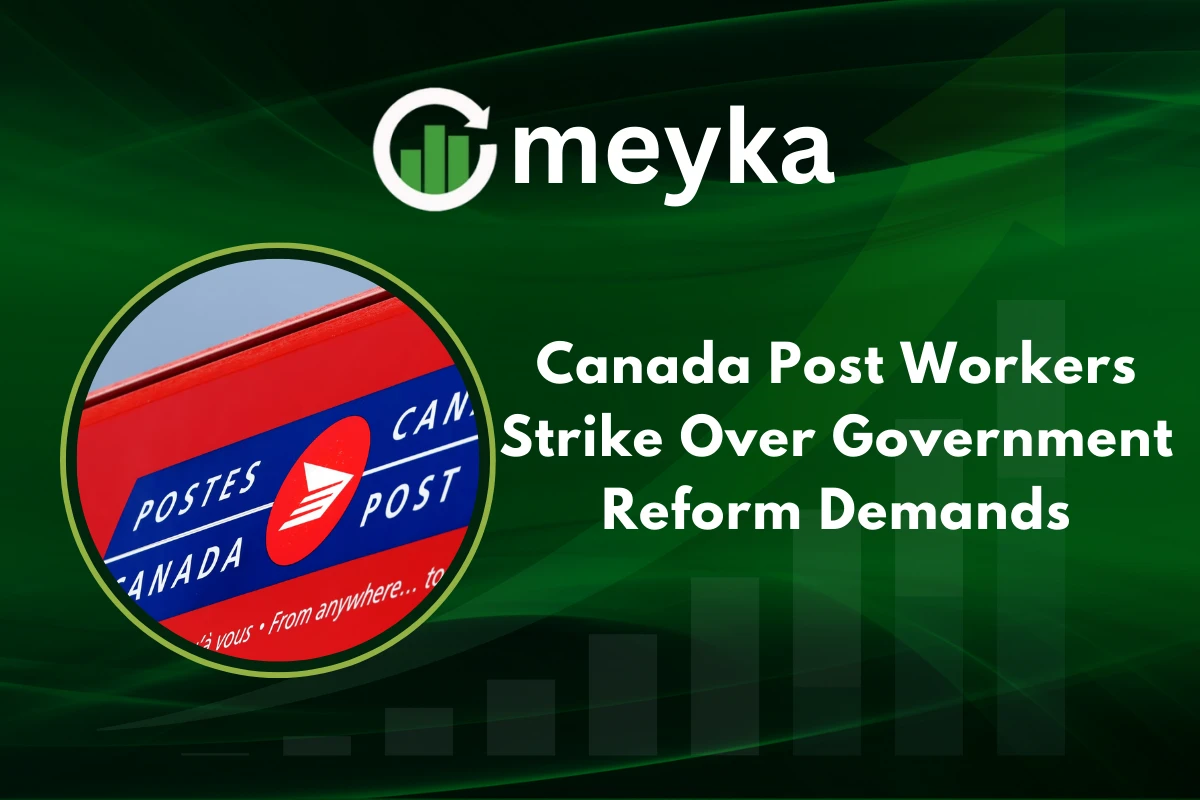Canada Post Workers Strike Over Government Reform Demands
Canada’s postal system is at the centre of a national standoff. On Thursday, the Canadian Union of Postal Workers (CUPW) announced an immediate nationwide strike in response to a government push for major operational reforms. The walkout shuts down many Canada Post operations and threatens longer-term changes to how Canadians get mail.
Canada Post background on government reforms
What the government said
The federal government told Canada Post to begin a broad transformation. Officials said the Crown corporation faces structural challenges and mounting losses. The government warned that repeated bailouts are not sustainable and that reform is needed to keep the service running. It even signalled possible changes to postage rates.
What’s in the reform talk
Union leaders say the reforms hinted at include ending some door-to-door delivery, expanding community mailbox conversions and other measures to modernize operations, moves that could cut jobs and change delivery standards. The union says final details were not provided when the government announced its direction, fuelling anger.
Canada Post timeline of how the strike escalated
Rapid escalation
Hours after the government made its public push for reform, the CUPW declared a nationwide strike. The union said the government’s announcement was an “attack on our postal service and workers,” and ordered members off the job effective immediately. Canada Post then warned customers to expect service delays as operations were suspended.
Earlier labour tensions
This is not the first clash. Earlier in the year, CUPW had used overtime bans and issued strike notices during tense contract talks. Those actions already strained services and helped push some businesses toward private carriers. The new government intervention brought tensions to a head.
Canada Post union demands and reforms opposed
What the unions want
- A clear commitment to protect jobs and door-to-door delivery.
- Details and guarantees before any changes are implemented.
- Fair negotiations on pay, hours, and delivery standards.
The union argues that the government’s order gave no clear roadmap on how changes would be applied and warned the proposals could mean large-scale job losses. Protecting workers and service levels is central to the union’s stance.
Specific reforms the union is fighting
- Community mailbox conversions in place of home delivery.
- Cuts to delivery frequency or ending daily door-to-door service.
- Changes that would let Canada Post reduce staff and outsource more work.
The union fears these steps would shift costs onto communities and weaken an essential public service.
Canada Post government response and negotiations
Government stance
Ottawa says reform is required to avoid long-term insolvency. The government framed the move as protecting services for the long run, not simply cutting costs. It also said Canada Post will be asked to present new, comprehensive offers and that the government is reviewing stamp-rate policy as part of broader change.
Calls to return to the table
Business groups, including the Canadian Chamber of Commerce, urged a return to good-faith bargaining. Officials and mediators may be brought in to avert a long stoppage, but neither side has signalled a quick compromise yet.
Canada Post’s impact on Canadians: mail delivery, businesses, and communities
How wide is the impact?
This is a nationwide Canadian strike. That means urban centres and remote rural towns will feel the effects. Rural areas that already face longer delivery routes could be hit hard if door-to-door service is removed or reduced. Small businesses that rely on timely parcel delivery may suffer lost sales.
How will everyday mail be affected?
- Delays to letter mail and parcels are likely while operations are suspended.
- Canada Post has warned it may stop accepting new items and pause deliveries during a full shutdown.
- Many Canadians may see slower service and fewer office hours at post offices.
Effects on small businesses
Small retailers and e-commerce sellers depend on predictable deliveries. During previous Canada Post disruptions, many moved to private couriers. That shift can raise costs for small firms and change long-term logistics decisions. Experts warn that persistent stoppages could accelerate a market shift to private carriers.
Canada Post broader implications for public services and privatization debates
The bigger debate
This dispute raises a national question: how should public services be modernized while protecting workers and access? Critics of aggressive reform fear creeping privatization. Supporters say bold change is needed to keep the service financially viable. The outcome could influence policy for other Crown corporations.
Why are Canada Post workers striking now?
They are striking in direct response to a government announcement demanding fast, wide reforms for Canada Post. The union says the government’s direction lacked detail and could cost jobs and reduce door-to-door service. The strike is an immediate protest against reform without guarantees.
How will the Canada Post strike affect small businesses?
Expect delivery delays, higher shipping costs if businesses switch to private couriers, and potential lost sales. Small businesses that cannot quickly change logistics are especially vulnerable.
Will mail still be delivered?
During a full nationwide strike, Canada Post warned it may suspend deliveries and stop accepting new items until the dispute is resolved, so many items will be delayed.
What happens next
If talks resume, mediators or federal negotiators may be asked to step in. A prolonged strike risks deeper financial damage to Canada Post and could speed up market shifts toward private couriers.
For workers, the stakes are clear: job security and service standards. For the government, the stakes are fiscal survival of a national service and political fallout from perceived cuts.
Conclusion
The Canada Post strike is both a labour fight and a test of public-service reform. It began as an immediate reaction to Ottawa’s reform push and now threatens daily mail service across Canada. The dispute pits job protection and universal service against urgent financial fixes, the government says are needed.
How quickly negotiators return to the table, and what guarantees are put in writing, will decide whether this is a short protest or a longer transformation of Canada’s postal system.
FAQ’S
Canada Post workers went on strike to protest government-led reforms they say could cut jobs, reduce door-to-door delivery, and weaken public postal services.
Yes, as of September 25, 2025, Canada Post is on a nationwide strike after unions walked out in response to Ottawa’s reform directive.
Canada Post has faced several strikes over the decades, with major walkouts in 1981, 2011, and now in 2025, making this one of the largest stoppages in recent years.
Small businesses, rural communities, and households relying on daily mail delivery are the most affected, facing service delays and higher courier costs.
Exact losses for the 2025 strike are not confirmed yet, but past disruptions cost Canada Post tens of millions in revenue, and analysts expect similar or higher impacts now.
Yes, Canada Post is a Crown corporation owned by the federal government, meaning it operates at arm’s length but remains under public ownership.
Disclaimer
This is for information only, not financial advice. Always do your research.






